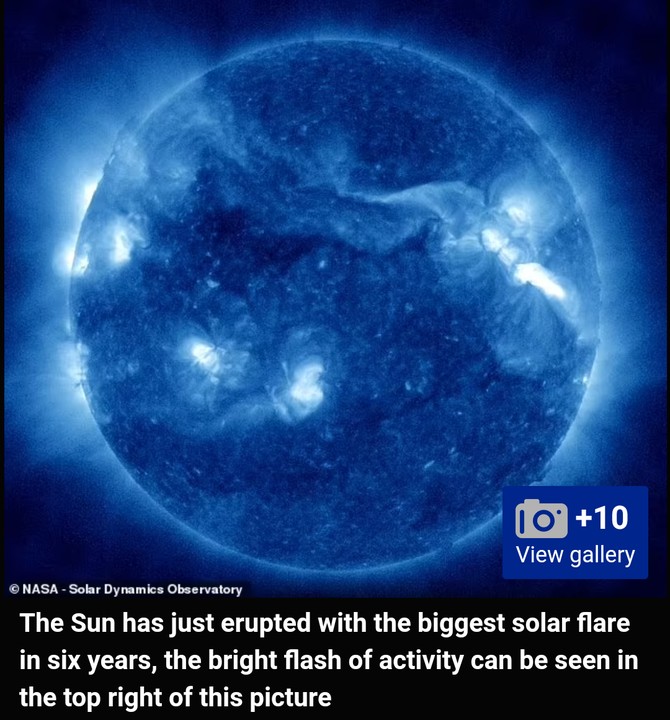The sun unleashed its most potent solar flare in six years, raising concerns about potential geomagnetic storms and widespread power outages on Earth, as cautioned by scientists.
This imminent threat stems from an enormous class X flare, the most formidable type our sun can produce, which erupted yesterday afternoon. Already causing temporary radio blackouts across South America, the repercussions are expected to escalate.

Despite the flare not being directly aimed at Earth, the looming risk persists, with the Met Office projecting a massive solar storm hitting our planet starting December 17. Fortunately, it’s anticipated to be a glancing blow.
At 17:00 GMT yesterday, NASA’s Solar Dynamics Observatory detected significant activity in the sun’s northern hemisphere. The pivotal moment captured was the eruption of a class X2.8 solar flare from the sun’s surface.
Solar flares, categorized from A to X, with A being the mildest and X the most intense, further specified by numerical values, pose a considerable threat. Yesterday’s event marked the most powerful since the substantial X8.2 flare in September 2017.
These solar eruptions result from the sun’s magnetic fields becoming entangled due to currents of super-heated gas. Commonly occurring in ‘sunspots,’ cooler regions on the sun’s surface, these phenomena are characterized by particularly intense magnetic fields.
When the energy stored in these twisted fields is suddenly released, vast amounts of material is very quickly heated to millions of degrees.
It is this blast of energy which can interfere with radio communications on Earth.
Dr Alexi Glover, space weather service coordinator for the European Space Agency, told MailOnline: ‘Yesterday’s solar flare is the largest of the solar cycle so far and also the largest we have seen since 2017.
‘We are still analysing the event, but early reports are indicating that this did impact radio communications for a short period on 14th.’
Yesterday’s flare has already caused moderate radio blackouts in South America, with a partial or complete loss of signal for two hours.
At the same time, there was also a huge coronal mass ejection (CME) which sent billions of tons of plasma and magnetic energy hurtling out into the solar system.
Unlike flares, CMEs are slow and are caused by gas bubbles threaded with magnetic fields which erupt over the course of hours.
When the solar particles hit the Earth’s magnetic field they interact, and produce electrical currents.
These geomagnetic storms flow through power grids and can even trigger massive power outages.
The particles ejected by CMEs also trigger changes in the environment of Earth’s low orbit that can affect the drag on spacecraft meaning satellites may need to adjust their orbit.





